2020 Zero SR/S Review- First Ride

We get first crack at Zero's first fully-faired motorcycle
It’s easy to take for granted the dynamics involved in creating a fairing for a motorcycle. Sure, you could easily mold a piece of plastic or resin and create a shape, but what thought process and research goes into such a mold? We take something like fairings for granted because they’re so commonplace. Big OEMs have the resources to hire big-name designers to create something that’s easy on the eyes, then study the fluid dynamics behind the designer’s sketch to see how different lines bend and shape the wind as it flows through it. Then these big players can utilize finite element analysis to dictate the strength of a part or component and adjust as needed for a given application. But nobody talks about these things anymore because this is simply something we expect. We’re numb to it. But when we stop and think about it, the fit and finish of a motorcycle determines its legitimacy.
With the new Zero SR/S, the small electric motorcycle company may have taken its biggest step yet towards the very thing we take for granted – legitimacy. On the surface, it’s “just” a fully-faired version of the SR/F, itself a giant step forward, especially compared to the models that came before it, but look deeper at the details and it’s clear to see this little company has put a lot of thought and consideration into its next generation of motorcycles. This is a level of refinement we’ve come to expect from big players, not a tiny outfit in Scotts Valley, California, so close to the Pacific Ocean it’s not uncommon for employees to go surf in the morning before work.
Coming Of Age
You’ll have to take my word for this, as pictures don’t do any justice, but the Cerulean Blue and Skyline Silver paint on the SR/S pop with vibrancy, as the metallic specks in the paint reflect the light. Body panels fit with precise and consistent gaps throughout – that is, if there are even any gaps at all. Little aspects like hidden fasteners make the thought that went into this more impressive.
Of course, the defining feature is the full fairing. While we typically associate fully-faired motorcycles as sportbikes (and Zero does as well), the ethos behind Zero’s fairing has less to do with sport and more to do with rider comfort. The thinking here is simple: the naked SR/F provides zero wind protection (pun not intended). If electrics are primarily commuter tools, then comfort should be a priority. The best way to do that is to move the wind away from the rider’s chest.
In designing the fairings and bodywork for the SR/S, the Zero team opted for sleek sophistication in its lines, defined by three signature curves: the J-curve starting at the top of the fairing, swooping beneath the bars and terminating at the tank, a secondary line from the base of the tank, through to the seat, then back up to the tail light, and finally, the down curve at the top of the side fairing, swooping down towards the motor. How meticulous were Zero on nailing the design? “We finished the clay model,” recounts Abe Askenazi, Chief Technical Officer, “but something about it just didn’t seem right. So we scrapped it and started over.”
Beyond a design aesthetic, however, Computational Fluid Dynamics was studied extensively to optimize the airflow up and around the rider. How much more efficient is the addition of the fairings? Zero says in a tuck the SR/S can achieve 13% more range at highway speeds. Equally important, the battery and motor still get the same amount of airflow, despite the fairings, as the naked SR/F.
In keeping with the comfort theme, the SR/S ergonomics differ from the SR/F. The handlebar is 15mm wider, with 26mm more rise, and angled 2º closer to the rider, putting the rider in a more upright and natural seating position. Down below, the pegs are 20mm lower, relaxing the overall rider triangle. The suspension also changes from the SR/F, with softer settings at both ends. Additionally, the rear spring is a single-rate unit compared to the progressive rate spring seen on the naked bike.
Maybe more than the fairings, the Zero team takes great pride in the SR/S headlight. Being the first fully-faired Zero, its headlight would serve as a defining feature, distinguishing it from other motorcycles on the road. As you can see from these photos, the dominating design element of the headlight surely defines the SR/S. At least it does to me. Fun fact: the LED modules are the same elements used in the SR/F headlight, there’s just more of them, stacked on top of each other.
Electrification and Ride Impressions
As you’ve probably guessed by now, the SR/S underpinnings are largely the same as the SR/F. The Z-Force battery has the same max rating of 14.4 kWh (12.6 kWh nominal) feeding volts to the air-cooled ZF75-10 motor via a 900-amp, three-phase motor controller. Zero says it produces 140 lb-ft of torque and 110 hp. As with the SR/F, a 3 kW onboard charger is standard, with the ability to accommodate up to 12 kW of charging power. As always with electric motorcycles, giving a mileage number is basically a futile effort, though when tested to steady-state riding at 70 mph, the riding type resulting in the biggest drain from the battery, Zero claims 82 miles. Zero also says you can get up to 200 miles from a charge, but if you were to actually ride within the crawling stop-and-go settings to actually yield such a number, your patience levels are superhuman.
Nonetheless, the new generation of Zero motorcycles is a clear step above, as our exclusive ride aboard the SR/S in and around Zero HQ in Scotts Valley, CA proved. My time aboard the camouflaged SR/S would encompass approximately 50 miles of mostly twisty canyon riding with a stint along the Pacific Coast Highway thrown in for straight-line cruising. With ambient temps hovering in the 50º range, sometimes dipping down into the 40s, I spent a lot of time experiencing the benefits the new fairings and windscreen would offer. But first, dialing the heated grips to maximum was in order. The process actually isn’t very intuitive as, instead of a dedicated button, you need to press and hold the mode button for a few seconds, but at least the TFT display is clean, colorful, and informative.
Heading out, my immediate impression wasn’t so much about the wind protection, but more about power. Yes, anyone who’s been following the EV space, whether it’s cars or motorcycles, is acutely aware of the immediate power and torque on hand. It’s a selling point manufacturers make sure you don’t forget, and for good reason – it’s insane (or ludicrous, as Tesla owners will tell you). The SR/S is no different. You twist the throttle and take off. More impressive in my opinion is how linear power is delivered, with a near telepathic connection between right hand and rear tire.
Credit for this goes to the electrical engineering team at Zero, by far the company’s single largest division. More than just engineers, they also ride, putting them in a unique position to immediately test what they develop from a rider’s perspective. Beyond the throttle control, this team was tasked with developing what it calls the Cypher III operating system that monitors the battery, motor, controller, Bosch IMU (and the myriad of safety features it controls), cell phone app, OBD II, and more. Also included in that framework is the act of putting power to the ground.
In his review of the SR/F, Evans covers the Cypher III OS in great detail, covering the electronic systems, subsystems, and interactive interfaces available on the latest batch of Zero motorcycles, including the SR/S. And while some of the features like sharing the details of my ride don’t interest me much, being able to tune my motorcycle, check its charge status, schedule timed charging, and monitor if someone is tampering with it, all via an app is pretty cool in my book.
But this is getting away from the bike at hand. Ostensibly, the point of the ride was to get a feel for the new bike. On our chilly ride, the extra wind protection provided by the full fairing and windscreen was a godsend, though the cold air also exposed where the wind protection was not. For my 5-foot, 8-inch frame, the diverted air got blasted to my bicep and upper forearms. Had my bike been fitted with a taller or wider screen (accessories are well under development), I may not have felt any wind at all. The ergonomic adjustments, too, provide a more relaxed ride from what I remember of the SR/F – not that the SR/F was much of a torture rack, but the extra forward lean on that bike helped combat the hit from the wind blast.
Really, the SR/S is what I – and probably you – expected it to be: a fully-faired SR/F. Not that that’s a bad thing. The full fairing doesn’t necessarily turn the bike into a head-turning stunner (Zero hopes the aesthetics invoke a certain sense of serenity), but it is attractive and adds a level of sophistication all small manufacturers strive for. The bubble around the cockpit is a nice place to spend time, the electric powertrain is robust, and the J.Juan brakes provide excellent stopping ability, proving you don’t necessarily need the word “Brembo” on the caliper to slow a motorcycle down quickly.
Gripes
For as impressive as the SR/S is, there are some things I don’t like. The performance guy in me is slightly off-put by the imbalanced effort it takes to turn the SR/S. Those first few degrees of lean take some muscle to initiate, but after a certain point, the bike tracts an arc well. Another oddity, at least for me, is the feeling as if each little bump in the road were sending jolts straight through the spring and to the bars and seat. It was as if the spring rates were too stiff for me. However, once the travel had gone past a certain point, the Showa suspension felt plush again, as if there wasn’t enough preload dialed in either end. At 150-pounds, I realize some motorcycle suspensions aren’t optimized for riders of my weight.
Then, of course, there’s the range. At the end of 50 miles darting through the ribbons of asphalt near Santa Cruz, including several back-and-forth passes for the camera, my battery percentage was showing in the teens. Granted, this was in full Sport mode with a ham-fisted rider at the controls and any thoughts towards power conservation given zero consideration. The critics will say this isn’t nearly good enough, while EV loyalists will commend the SR/S for admirable mileage given the situation. Personally, more mileage is always welcome, but I’m lucky enough to live next to twisty roads, so commuting during the week, throwing my lunch in the convenient “frunk,” and grabbing breakfast at the top of my local mountain on the weekend is a very real use case for me that the SR/S could easily handle. I realize there are many who aren’t so fortunate. Still, even at 15% battery remaining, I could only feel a slight throttling of initial torque when twisting the wrist. It was far from a drastic cut in power. The real downside comes when you recharge at a standard 110v outlet. Be prepared for eight-plus hours.
The Big Takeaway
Thanks to some leaked videos and online reports, the fact the SR/S exists isn’t much of a surprise. Even the fact it shares a lot with the SR/F shouldn’t be much of a newsmaker. To most, a full fairing, a windscreen, and revised ergos are barely newsworthy. In reality, this isn’t much of a big deal to me, either. Ironically, however, the practicality of the SR/S over the SR/F makes it the Zero I would add to my collection if I were in the market.
The reality after having ridden the SR/S is the fit and finish from the SR/S (and SR/F) is what we come to expect from major players in the industry. This is my big takeaway and the thing I’m most impressed with. Having watched Zero mature over the years from a glorified mountain bike, to something resembling an electric motorcycle, to what we have today, I come back to the theme that started this review in the first place: legitimacy. Zero has achieved it.
Of course, if you’ve read this far then you’re aware of Zero’s shortcomings: the inability to use DC Fast Charging, air-cooled motors (though some might consider this a benefit), and the high price tag that affects the majority of electric motorcycles. Zero’s hoping the reinstatement of select federal rebate options, along with a relatively robust (and growing) level 2 charging network will be enough to look past those negatives.
Only you will know if an electric is right for you. If it is, the Zero SR/S is worthy of your attention. The SR/S is available in two trims: Standard and Premium, the former offers 3 kW of onboard charging while Premium gives you 6 kW of onboard charging as well as heated grips and aluminum bar ends. Pricing is set at $19,995 for the Standard and $21,995 for Premium. Both are available in either Skyline Silver or Cerulean Blue, with shipments already being sent to dealers.
2020 Zero SR/S
+ Highs
- Exceptional fit and finish (including the frunk!)
- Instant electric torque
- The most sophisticated-looking Zero yet
– Sighs
- Quirky handling characteristics (or maybe I’m too skinny?)
- No DC Fast Charge ability
- Menus can be a little tricky to navigate

Troy's been riding motorcycles and writing about them since 2006, getting his start at Rider Magazine. From there, he moved to Sport Rider Magazine before finally landing at Motorcycle.com in 2011. A lifelong gearhead who didn't fully immerse himself in motorcycles until his teenage years, Troy's interests have always been in technology, performance, and going fast. Naturally, racing was the perfect avenue to combine all three. Troy has been racing nearly as long as he's been riding and has competed at the AMA national level. He's also won multiple club races throughout the country, culminating in a Utah Sport Bike Association championship in 2011. He has been invited as a guest instructor for the Yamaha Champions Riding School, and when he's not out riding, he's either wrenching on bikes or watching MotoGP.
More by Troy Siahaan












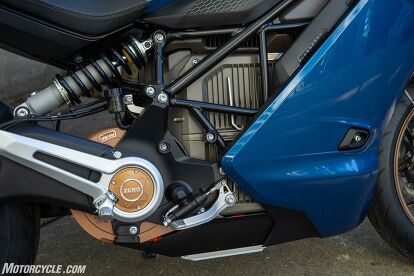


































































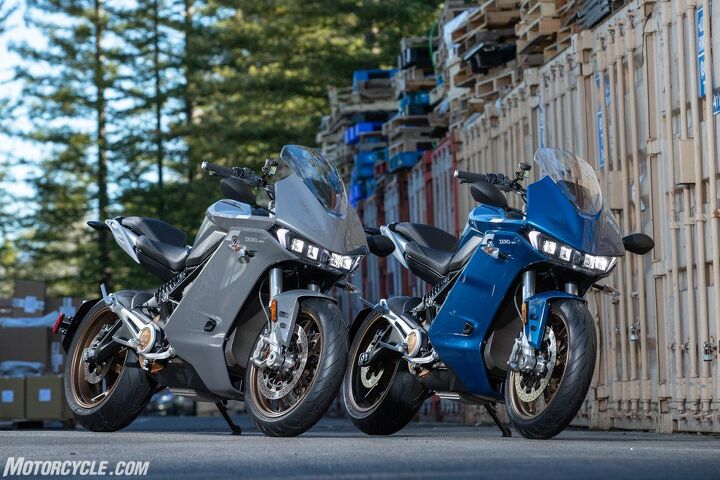


















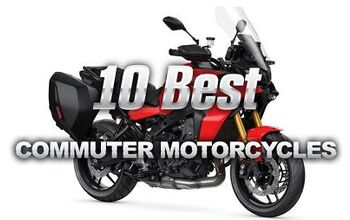


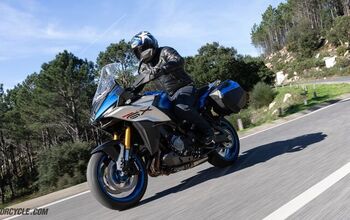

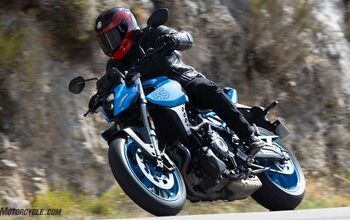










Comments
Join the conversation
It took a minute, but that headlight...
It is V.I.N.C.E.N.T. from "the black hole"...
One cannot truly appreciate this bike unless you take it into the twisties and hit them heavy. A pro rider told me that this bike has no comparison as the throttle is smoother and more fluid than any ICE bike ever made, and there is no centrifugal inertia of a big gas motor to overcome for lean. With the advent of the Bosch torque control even a novice rider is forgiven for certain wrong moves that would lowside an ICE bike rider.
Due to instant response of an electric motor no ICE bike would yield the full benefit of this electronic control as there is an inherent lag in ICE response to throttle alteration.